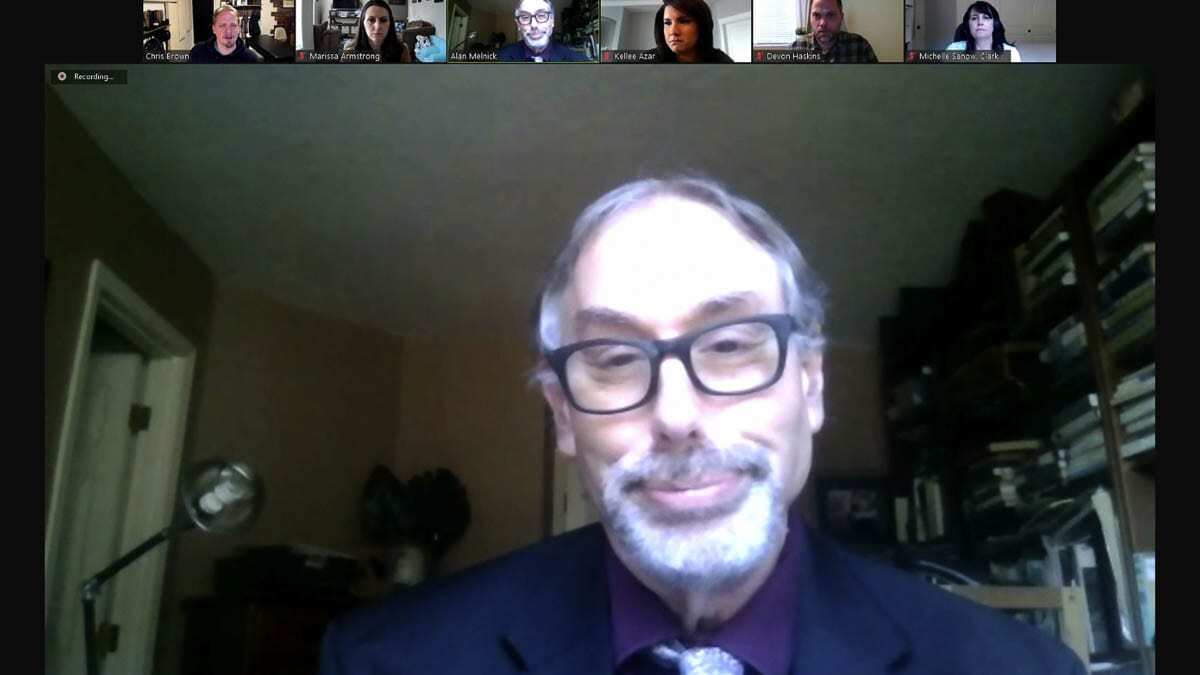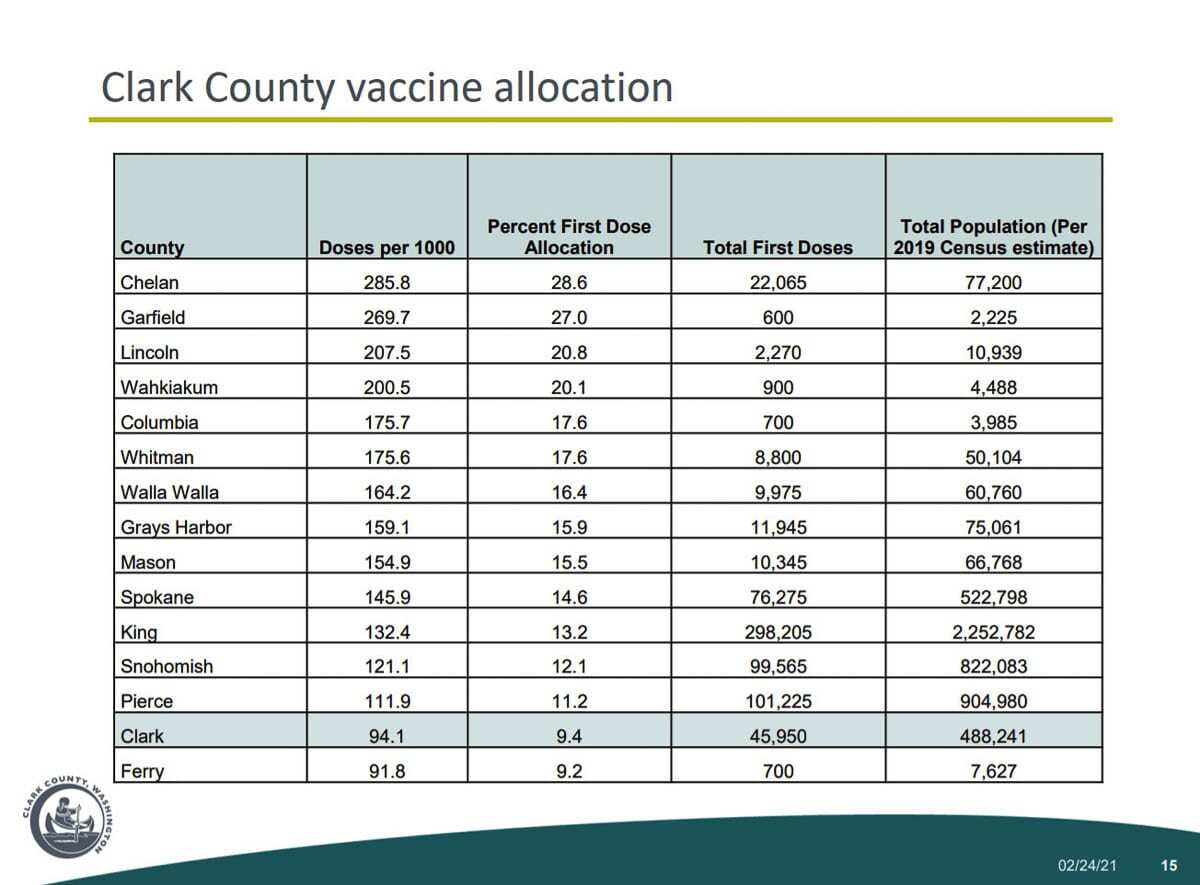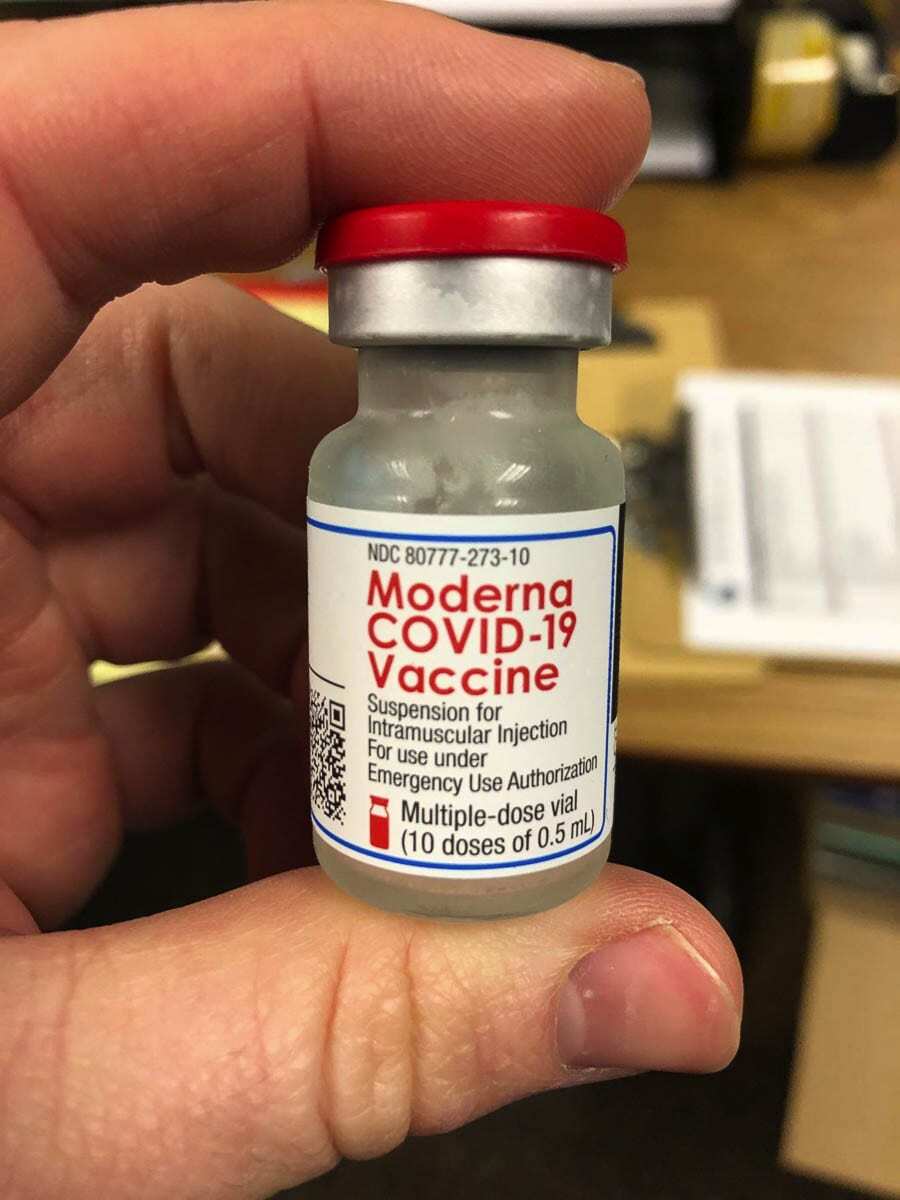An analysis shows Clark County lagging far behind other similarly-sized counties in the state when it comes to vaccine distribution
CLARK COUNTY — UPDATE: This story has been updated with a response from the Washington Dept. of Health sent to Clark County Today on Wednesday afternoon.
Through the first 11 weeks of vaccine rollouts in Washington state, Clark County has received 45,950 first doses, or 94.1 per 1,000 people.
That number includes doses administered at the state-run Clark County Fairgrounds mass vaccination site.
The next largest county in the state, Spokane County, with a population just 35,000 people larger, has received over 76,000 first doses, or 145.9 per 1,000 residents.
That disparity has Clark County Public Health and local elected officials fuming, and scratching their heads.
“Maybe the public would be asking, ‘are we being punished?’” said Clark County Chair Eileen Quiring O’Brien during a Board of Public Health meeting this morning. “Actually, that’s my question.”
In an interview Wednesday afternoon, Dr. Alan Melnick, the county’s public health officer and health director, said they first became aware of the disparity about a month ago, as it became apparent that area providers were continuing to struggle with getting first dose allocations from the state.

“Certainly, when the state pod opened up at the Fairgrounds, and our other providers were receiving less vaccine, and were making decisions about not doing first doses anymore because they wanted to make sure that enough second doses were there for their patients, I became more acutely aware of it,” said Melnick.
Following up on those concerns, Clark County Public Health conducted their own analysis of vaccine distributions statewide, looking at a mix of 15 counties, including the five largest population sizes, five lowest, and five in the median range.
Clark County ranked 14th out of those 15 for vaccine allocation on a per capita basis, with only Ferry County and its 7,600 residents coming in lower.
“I really don’t have an explanation as to why our allocation was so much less than many other counties in the state,” Melnick said.

As the health officer for several other counties in the region, Melnick said he and other local health departments have formed a work group, aiming to share information and then speak with the Department of Health, hopefully later this week, in an effort to clear up the confusion over how the state is allocating doses.
“I think we ought to know that,” he said, “and I think the public ought to know how that works as well.”
In response to an inquiry, Shelby Anderson with the Washington Department of Health said they were aware that a few counties were experiencing a gap in vaccine allocation “largely due to second dose reallocations in recent weeks.”
Anderson said the state reached out to several counties over the weekend, offering increased shipments of the Pfizer vaccine, and followed up with them today. She did not indicate directly whether Clark County was among those contacted by DOH.
Anderson called the vaccine distribution a “complex issue with many moving parts,” but added that 90 percent of the 1.5 million doses received in the state have been administered as of this week, “which helps protect us all by building community immunity.”
Melnick noted that Clark County has the highest number of adult family homes per capita in the state, 89,000 people who qualify in Phase 1B1, and the fifth highest overall population.
“If the state said, ‘we looked at your 1B1 population, and you’re XYZ and Spokane’s is ABC, and this is how we decided,’” Melnick said, “but I haven’t seen an explanation like that. And I have no reason to believe the age distribution is remarkably different.”
Melnick added that their work group is hoping to speak with the Department of Health later this week to gain further clarity on the distribution inequity, and how the state is allocating doses.
In her response, Anderson noted that “it has always been a priority to get counties their proportional share of vaccine,” and that “several factors determine allocation, including data we receive from providers and local health jurisdictions.”
County, providers ready and waiting
Adding to the frustration for Melnick and county leaders is that they have worked hard to lay the groundwork for distribution of vaccines as they arrive.

The Federal Emergency Management Administration sent a Type 1 incident management team to the region, who worked with county health departments, first responders, providers, and other agencies to gear up for mobile vaccination clinics, as well as additional community vaccination sites.
The Southwest Washington Public Health Incident Management Team was formed last week, said Melnick, with assistance and training from the FEMA team, and is now largely ready to ramp up vaccine efforts as soon as the supply is available.
If part of the state’s goal is equity, Melnick says, their plans may be the best shot the region has to get vaccines to those marginalized populations, by utilizing mobile vaccination clinics, and spreading allocations to providers in those communities.
“I’m not opposed to the mass vaccination site,” Melnick added. “I want to get vaccine into people’s arms as quickly as possible. But our providers are quite capable, they are more geographically dispersed and easier for folks to reach.”
Melnick said providers in the county could be administering “a couple thousand doses” a day, in addition to the work that local health departments are prepared to do.
“We’ve got a lot of plans,” he said, “we’re ready to go, we just want vaccines.”
The Board of Health indicated Wednesday morning that they may write a letter to the Department of Health and Washington Gov. Jay Inslee, urging them to look into the matter and provide clarity on whether Clark County’s vaccine allotment fits with any kind of logic.
“This just isn’t fair to Clark County, however they’re measuring it,” said Councilor Gary Medvigy. “We have the same issues that every other county does.”




